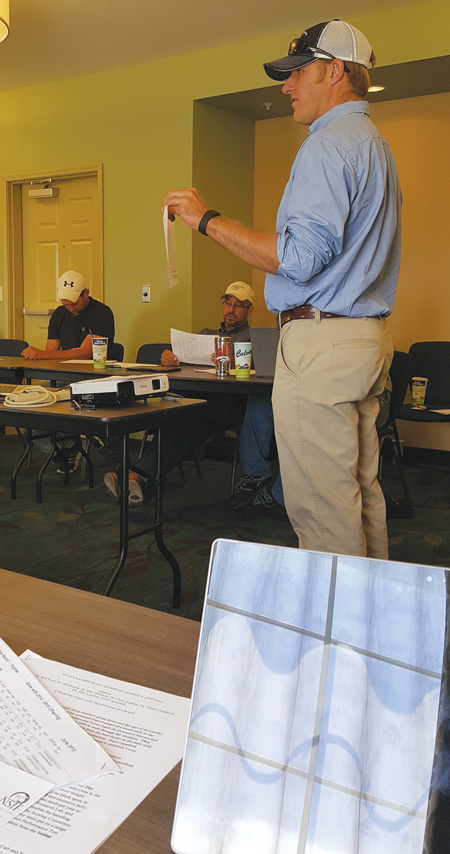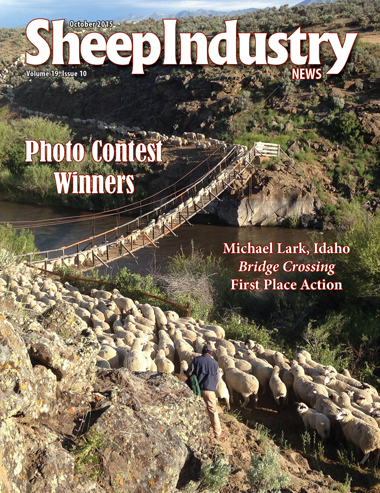Fine Wool Consortium Labeled A Historic Event for the Industry
There’s an old saying that goes, “A journey of a thousand miles begins with one step.” The path to increasing sheep production might not be that long of a trek, but it has to begin somewhere.
 And thus was the case with the Fine Wool Consortium the first weekend of September in Greeley, Colo. Fine wool breeders from all across the United States came together to discuss how they can work cooperatively to increase sheep production – both wool and meat – by adopting the use of technology available through the National Sheep Improvement Program.
And thus was the case with the Fine Wool Consortium the first weekend of September in Greeley, Colo. Fine wool breeders from all across the United States came together to discuss how they can work cooperatively to increase sheep production – both wool and meat – by adopting the use of technology available through the National Sheep Improvement Program.
The program, funded in part by a grant from ASI’s Let’s Grow committee, was led by Reid Redden, Ph.D., sheep and goat specialist with Texas A&M Agrilife Extension.
“The primary thing we want seedstock producers to do is use NSIP and work together to breed more productive sheep,” Redden said. “This has been done by other breeders in NSIP. There are some considerable differences in the group, as there would be with any group of breeders in the industry. This first meeting gave us a chance to get to know each other and have discussions about how to use the program and work together to improve the genetic potential of the U.S. sheep flock.”
While it’s still too early in the process to make solid decisions about how the program will operate, the meeting alone was a gigantic first step.
“I think it’s very encouraging for the future of the industry,” said Let’s Grow Coordinator Alan Culham, who was in attendance. “A lot of people said we couldn’t get that group together, but we did. It’s nothing short of historic that we had all of these people sitting in the same room having these conversations.”
While many breeders might know a lot about their flock’s average fleece weight, yield, etc., the use of NSIP technology allows such raw data to be analyzed in a way that is new to many in the sheep industry.
“They’ve been using this technology in the beef industry for quite a while,” Redden said. “But we’re still getting people used to the idea of using this technology with sheep. By doing this, we can be more precise about making genetic decisions. This is a better predictor of future production than just the raw data itself, and especially better than selecting sheep without data at all.”
Redden is also lobbying for producers to share top genetics. While that won’t be possible in several flocks this fall, some producers were ahead of the game and already have the ball rolling in this area. A highlight of the event was learning that the U.S. Sheep Experiment Station will be conducting research that will help this group accomplish its goals of creating genetic linkages, identifying elite genetics and making cross-breed comparisons.
“Next year will be a really important time as we start moving more rams around,” Redden said. “But this isn’t an overnight process. Within two years we should start seeing some real positive benefits of the consortium, and there will be a lot to learn in the next five years or more.”
While NSIP touts the benefits of using estimated breeding values for all sheep producers, there are specific advantages to bringing together a small group of fine wool breeders.
“These are the seedstock suppliers,” Redden said. “They sell to commercial producers. We know that working with a small subset like this can improve the industry as a whole. Not everyone has to be involved at this level, but everyone can benefit from it down the line. As a commercial producer, the best thing you can do is educate yourself about the technology that is available and buy rams with EBVs that will positively affect your flock profitability for many generations to come.”
Producers who took part in the program included Matt Benz, Tom Boyer, Beau Chapman, Paul and John Erk, John Helle, John and GeorgAnn Jewell, Jody and Abby Ketterling, Ben Lehfeldt and Rick Powers. Representatives from ASI, Let’s Grow and NSIP were also on hand.


